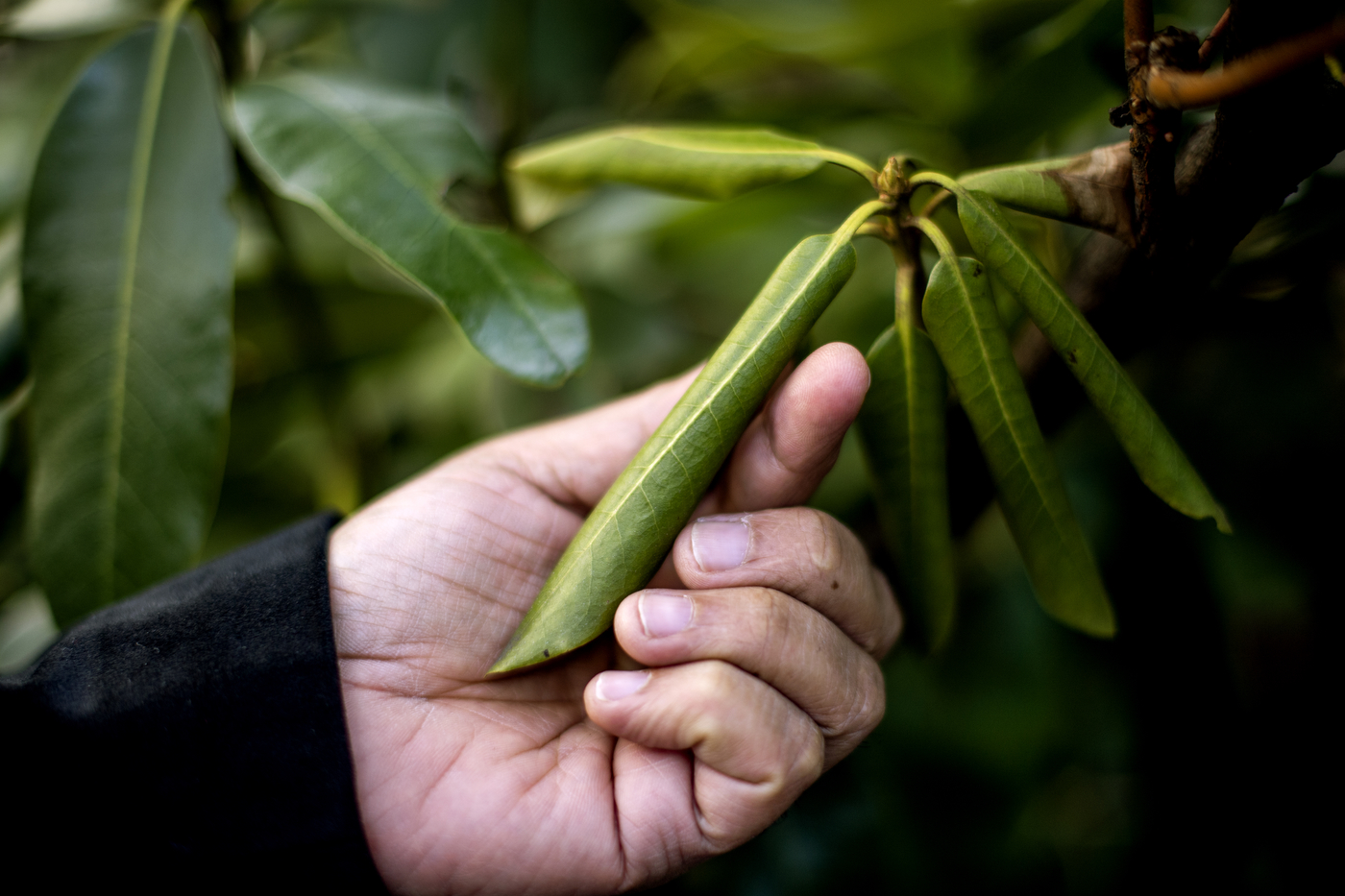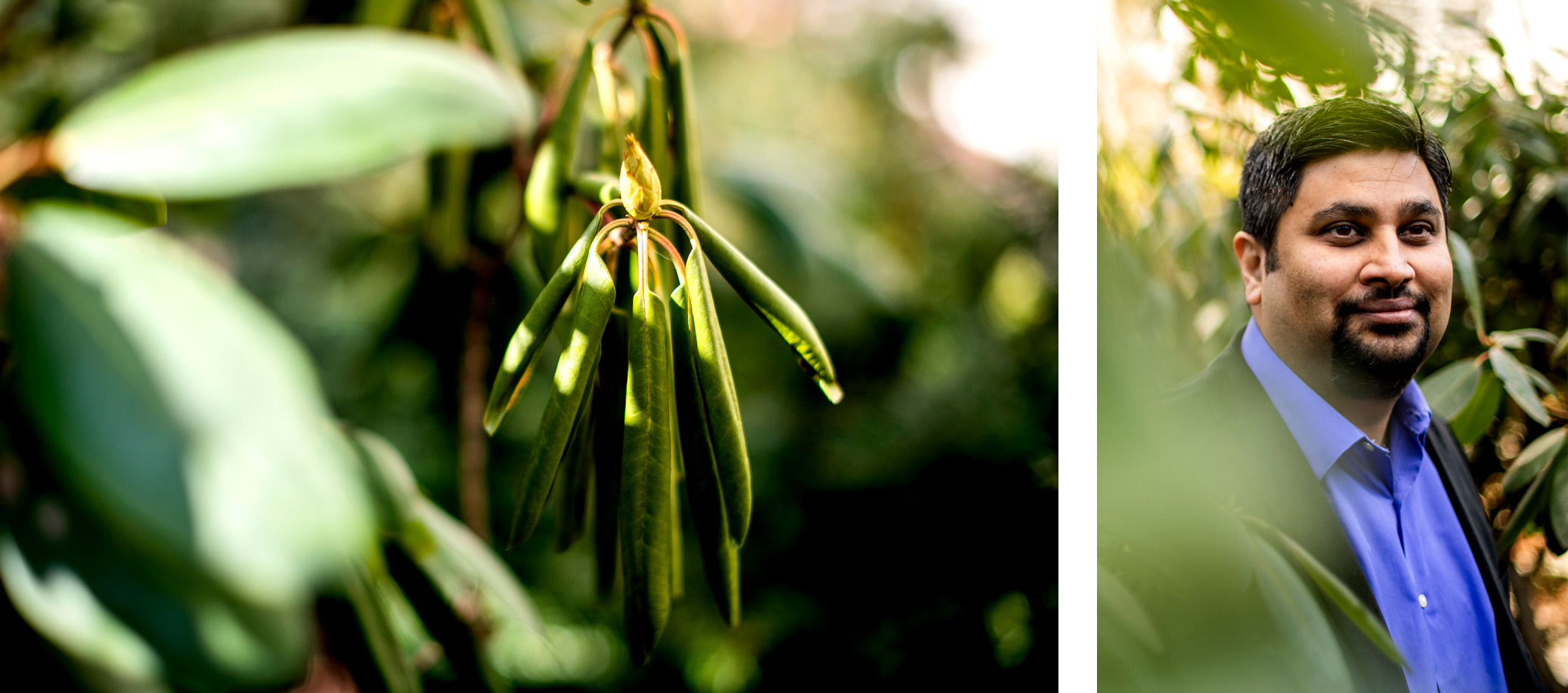What can a rhododendron teach us about robotics?

On a chilly winter day, Moneesh Upmanyu took a walk with his son near their home outside of Boston. They passed a rhododendron bush, its thick green leaves curled up into thin tubes dangling limply from their stems. It looked dead, or dying.
But when Upmanyu, a professor of mechanical and industrial engineering at Northeastern, walked past the spot a few days later, on a warmer day, the plant seemed to have revived. The leaves were spread out flat and lifted upwards towards the sun. His son had one question: Why?
“I didn’t have an answer,” Upmanyu says. But he decided to find out.
Upmanyu studies the structural properties of different materials and how they respond to stimuli, for use in things like microelectronics or robotics systems. In a recent paper featured on the cover of this month’s Journal of the Royal Society Interface, Upmanyu and his colleagues examined the mechanical aspects of how rhododendron leaves curl and droop.

“In robotics, microelectronic devices, you want to design switches which can make contact and disconnect just based on some stimulus, like temperature, light, or even touch,” Upmanyu says. “This sort of understanding is quite important for designing smart, active structures.”
In this particular instance, it comes down to the movement of water, Upmanyu says. When temperatures drop, water moves from the stem into the leaf, causing the stem to droop. The water is distributed through the leaf unevenly, and as it freezes, it causes the top of the leaf to expand and the underside to contract. This makes the leaf start to curl.
If that were the end of it, though, the leaf would curl uniformly downwards, resulting in an upside-down cup shape. What causes the leaves to roll into a tight cigar are their stiff spines, or midribs, that run down the center of the leaf, says Hailong Wang, lead author on the study and a professor at the University of Science and Technology in China.
“The leaf cannot bend in a dome-shaped hemispherical structure—it has to bend only along one direction, which the stiff midrib picks,” says Wang, who received his doctorate from Northeastern in 2010. “The curvature develops only along one direction, but it’s amplified.”

When the researchers cut strips from rhododendron leaves, separating them from midrib, they curled and twisted loosely in all directions. But with curling restricted by the midrib, those forces are redirected into just one direction, causing a much tighter curl.
“That was a surprise to me,” says Erik Nilsen, an ecologist at Virginia Tech who collaborated on the study. “I thought the motor force for moving was horizontal on the leaf, because the leaf curls from the edges down.”
The biological reason for this curling, Nilsen says, is to help these plants survive in winter.
Rhododendrons retain their green leaves throughout winter, despite growing in tough, alpine conditions. As the deciduous trees around them lose their leaves, extra sunlight reaches the rhododendrons. But in the coldest weather they can’t use it—their metabolism shuts down.
“So they’re taking in radiation and they don’t have the biochemical mechanisms to shuttle that radiation into photosynthesis,” Nilsen says. “They have a lot of energy coming into the leaf and nothing to do with it.”
That radiation can damage the leaves. By curling and drooping, rhododendron leaves drastically reduce the amount of sunlight hitting them when they can’t use it.
This may also help them thaw slower after a frost, Upmanyu says. If the leaves thaw and uncurl too quickly, frost needles could puncture and damage the surface of the leaves.
Understanding how these mechanisms work in rhododendrons could potentially help scientists engineer crops that are more resistant to cold weather. But Upmanyu is also interested in how these same principles can be applied to engineering.
“I’m interested in how sheets change shape and how we can program smart structures, and nature often offers robust strategies waiting to be exploited,” Upmanyu says. “This was a beautiful example of a reversible shape-change, where water movement driven by temperature was a stimulus.”
For media inquiries, please contact Marirose Sartoretto at m.sartoretto@northeastern.edu or 617-373-5718.





